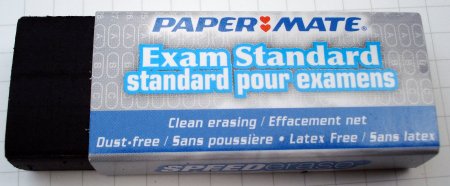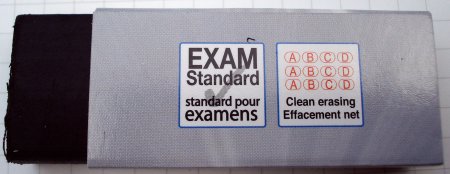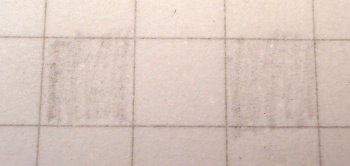
There was a question about how the PaperMate Exam Standard compared to other black erasers, so I thought I’d try a small side by side comparison.

As was done with previous eraser tests, the Staedtler Mars Lumograph 100 and a Rhodia pad were used as our reference pencil and paper.

I also added in Pentel Ain 2B 0.7mm mechanical pencil lead for comparison.

The erasers tested were:
PaperMate Exam Standard
Factis Black 18
Seed Kesu Gomu
Faber-Castell 7089-20
Mitsubishi Boxy EP-60BX
Some black erasers I’m aware of that I don’t have are the Papermate Black Pearl, Carta Pura, and Stabilo Exam Grade.
So what is the raison d’être of these erasers? I don’t really know. The only one I’ve generally seen at retail in Canada is the Factis. I heard it suggested that charcoal erasure is the purpose of black erasers. How do they differ from a standard white vinyl eraser? Here, I know even less. It is entirely possible that they are just dyed standard erasers.
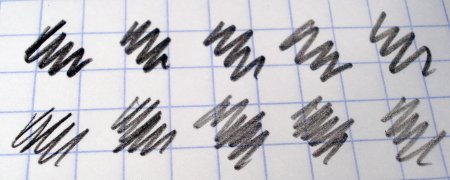
Basically, I thought they would be alike – but testing exposed some differences.
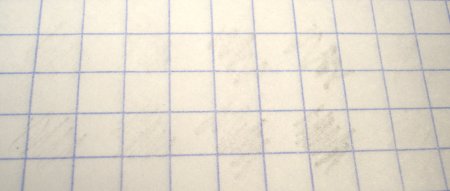
First, the polymer Ain lead erased better than the ceramic Staedler lead, which is consistent with previous findings.
Second – picking the winner was tougher than picking the loser. Two were notably worse at erasure – the Kesu Gomu and the Faber-Castell, the Faber-Castell being the worst.
The winner is, to my eye, the Boxy, though the Papermate and Factis also did extremely well.
My general impression is that the erasers are on the softer, gentler side.
A couple of notes about the erasers –
I don’t find the Exam Standard officially acknowledged on Papermate’s website. It shipped in a blister pack of three, and the erasers are wrapped in paper sleeves.
Factis is based in Girona, Spain. The eraser has a cellophane band, and is the only eraser with markings.
The Kesu Gomu is from Seed of Japan. It is a delightful eraser, and some great photos can be seen at Lexikaliker. I am not sure if it is meant to be a novelty eraser, but I am treating it as if meant for duty.
The Faber-Castell has rounded edges which are called a “comfort feature”. Interesting, as many erasers tout their sharp edges as a feature.
The Boxy has an unusual square cross-section.

I thought I was done, but decided on one more challenge – to investigate the charcoal erasure function.

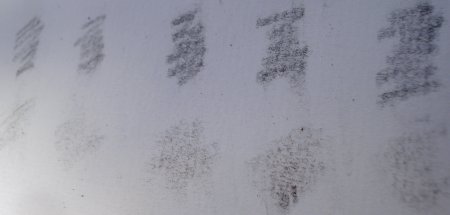
I tried both a charcoal pencil and willow charcoal on a Fabriano journal. As one would expect, the natural charcoal erased much more easily than the compressed charcoal in the pencil. Yet, the charcoal marks don’t really erase.













